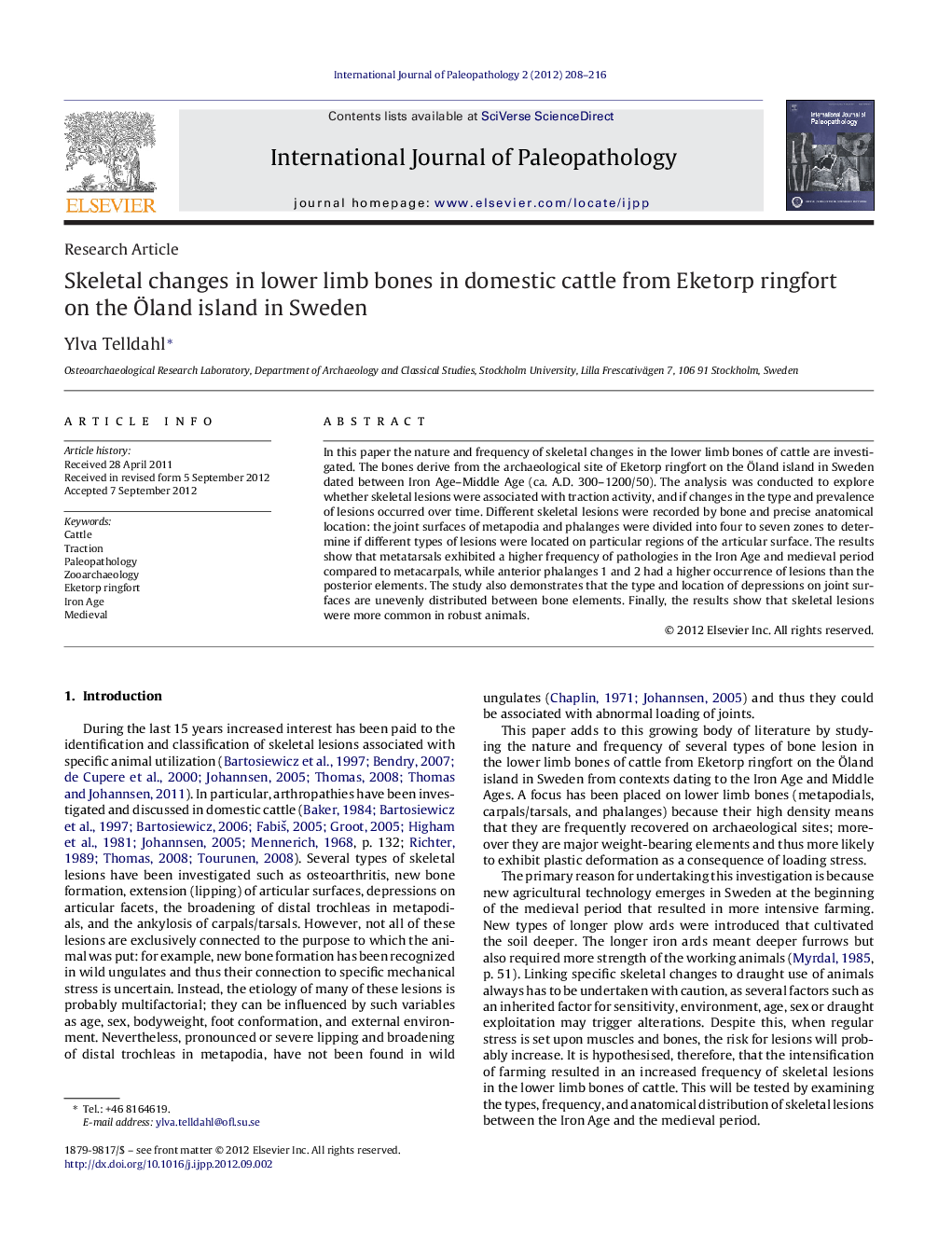| Article ID | Journal | Published Year | Pages | File Type |
|---|---|---|---|---|
| 101466 | International Journal of Paleopathology | 2012 | 9 Pages |
In this paper the nature and frequency of skeletal changes in the lower limb bones of cattle are investigated. The bones derive from the archaeological site of Eketorp ringfort on the Öland island in Sweden dated between Iron Age–Middle Age (ca. A.D. 300–1200/50). The analysis was conducted to explore whether skeletal lesions were associated with traction activity, and if changes in the type and prevalence of lesions occurred over time. Different skeletal lesions were recorded by bone and precise anatomical location: the joint surfaces of metapodia and phalanges were divided into four to seven zones to determine if different types of lesions were located on particular regions of the articular surface. The results show that metatarsals exhibited a higher frequency of pathologies in the Iron Age and medieval period compared to metacarpals, while anterior phalanges 1 and 2 had a higher occurrence of lesions than the posterior elements. The study also demonstrates that the type and location of depressions on joint surfaces are unevenly distributed between bone elements. Finally, the results show that skeletal lesions were more common in robust animals.
► Metatarsals exhibited a higher frequency of pathologies compared to metacarpals. ► Anterior phalanges 1 and 2 had a higher occurrence of lesions than the posterior elements. ► Skeletal lesions were more common in bone elements from robust animals. ► The presence of lipping and broadening of distal trochleas in metapodia suggest that Eketorp cattle were to some extent used as working animals.
